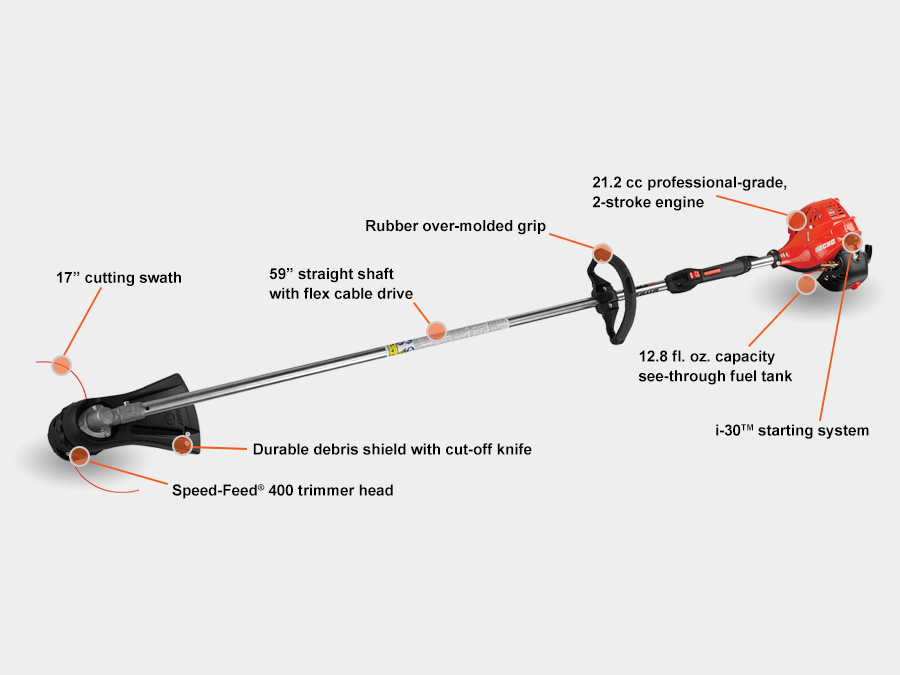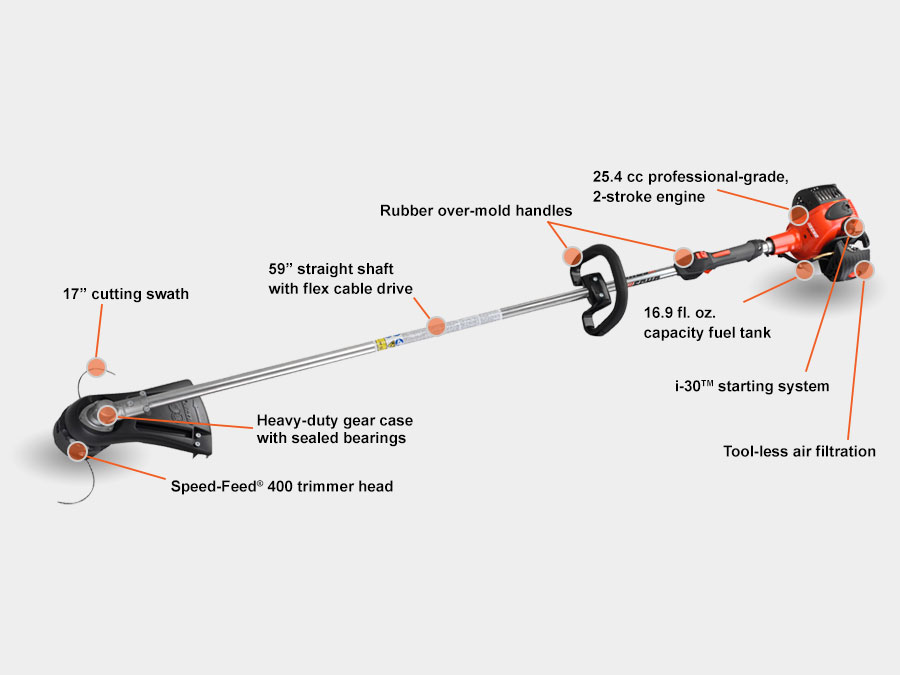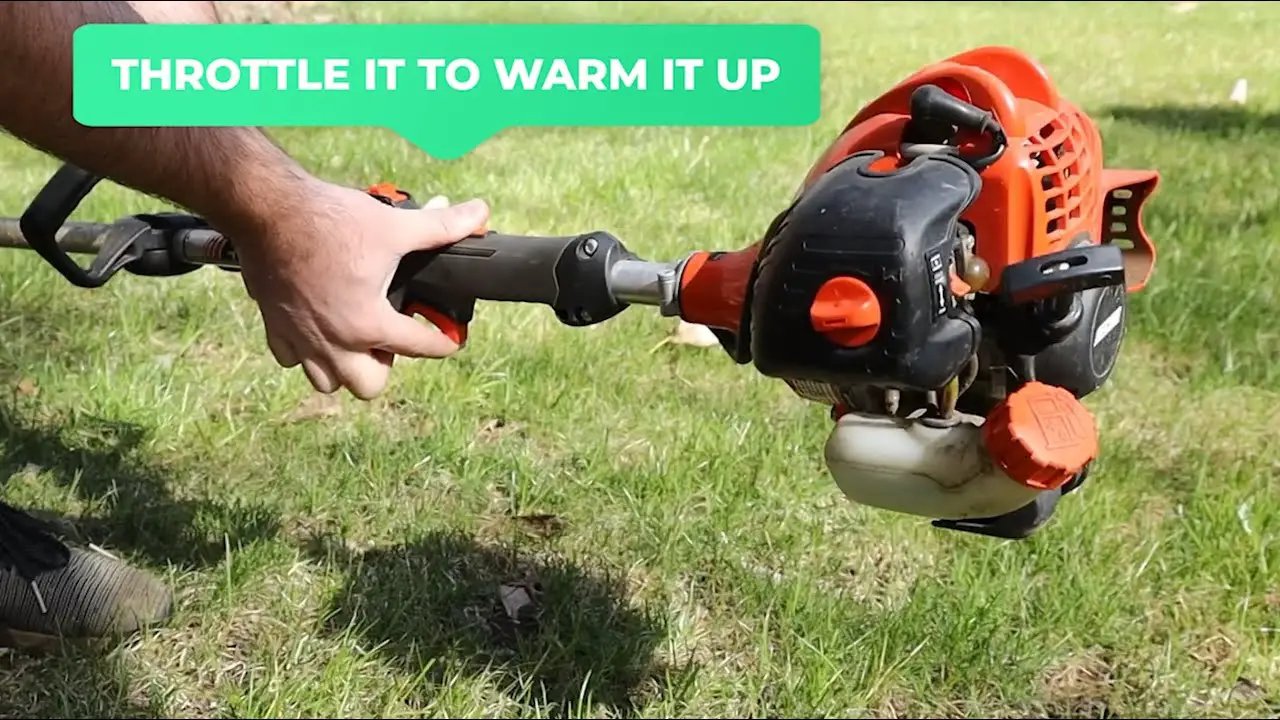To start an Echo weed eater, first, ensure you have the necessary safety gear. Then, prime the engine, switch it on, and pull the starter rope.
Starting a weed eater ensures your outdoor space remains tidy and well-kept. Echo weed eaters are popular for their reliability and ease of use. Whether you’re a seasoned gardener or just starting out, learning how to start an Echo weed eater is essential for maintaining a neat and manicured lawn.
With a few simple steps, you can have your Echo weed eater up and running in no time. We’ll guide you through the process of starting an Echo weed eater and provide some useful tips for maintaining and troubleshooting your equipment.
Contents
Introduction To Echo Weed Eaters
Echo Weed Eaters are renowned for their reliability and performance in maintaining outdoor spaces.
The Popularity Of Echo Brand
Echo has built a strong reputation for producing high-quality outdoor power equipment.
- Trusted by professionals and homeowners alike
- Known for durability and efficiency
- Offers a wide range of products
Why Choose An Echo Weed Eater
There are compelling reasons to opt for an Echo Weed Eater for your lawn care needs.
- Powerful and reliable performance
- Easy to start and use
- Designed for precision and efficiency

Safety First
Safety should always be a top priority when it comes to operating an Echo weed eater. While these tools are incredibly useful, they can also be dangerous if not handled properly.
Before starting your Echo weed eater, there are several safety measures you should take to ensure a safe and successful operation. Here are some key safety tips to keep in mind.
Personal Protective Equipment
Before starting the Echo weed eater, make sure you have the necessary personal protective equipment (PPE). This includes safety glasses or goggles to protect your eyes from flying debris, earplugs or earmuffs to protect your hearing from the loud noise, long pants to protect your legs from the cutting line, and sturdy work boots with non-slip soles to protect your feet from any potential hazards.
Pre-operation Safety Checks
Prior to starting the Echo weed eater, it’s important to conduct some pre-operation safety checks. First, inspect the machine to ensure it’s in good working order. Check for any loose or damaged parts, and make sure all bolts and screws are tight.
Next, check the cutting line to make sure it’s properly installed and in good condition. Finally, ensure the fuel tank is full and that the oil and fuel mixture is correct.
Once you’ve completed these safety checks, you can move on to starting the Echo weed eater. Keep in mind that it’s important to follow the manufacturer’s instructions for your specific model, as the starting process may vary slightly depending on the machine.
Preparation Steps
When starting an Echo weed eater, proper preparation is key to ensure smooth operation. Follow these essential steps to get your weed eater up and running.
Fuel Mixing Tips
1. Use a clean container for mixing fuel to prevent contamination.
2. Mix fuel and oil at the correct ratio recommended by the manufacturer.
3. Shake the mixture thoroughly to ensure proper blending of fuel and oil.
Priming The Carburetor
1. Locate the primer bulb on the carburetor of your Echo weed eater.
2. Press and release the primer bulb several times to prime the carburetor.
3. Ensure the bulb fills with fuel to prime the engine effectively.

Starting The Engine
To start an Echo weed eater, first, ensure the choke is on, prime the engine, pull the starter rope gently until you feel resistance, then give a firm pull to start the engine. Remember to warm up the engine before using the weed eater for optimal performance.
Troubleshooting Common Issues
When starting an Echo weed eater, it’s not uncommon to run into some common issues. Troubleshooting these issues can save you time and frustration, getting you back to yard work quickly. Let’s delve into some common problems and how to resolve them.
Engine Won’t Start
If the engine of your Echo weed eater won’t start, there are a few things you can check. First, ensure the fuel tank has the proper fuel mixture. Next, check the spark plug for signs of wear or fouling. Finally, make sure the air filter is clean and not clogged.
Engine Starts Then Stops
If the engine starts but then immediately stops, there are a couple of potential causes. First, check the fuel lines for any blockages or leaks. Next, inspect the carburetor for any debris or damage. Finally, ensure the ignition switch is in the correct position.

Maintenance For Longevity
To start an Echo weed eater, begin by placing it on a flat surface. Prime the engine by pushing the primer bulb several times. Set the choke to the “full” position and pull the starter rope until the engine attempts to start.
Then, move the choke to the “half” position and pull the starter rope again until the engine starts. Regular maintenance ensures longevity and reliable performance.
Maintenance for Longevity Regular Cleaning To maintain your Echo weed eater, regularly clean the exterior and air filter. Spark Plug Maintenance Check and clean the spark plug regularly for optimal performance.
Proper maintenance is crucial for the longevity of your Echo weed eater. Regular Cleaning
- Use a damp cloth to wipe the exterior of the weed eater.
- Remove debris and dirt from the air filter to prevent clogs.
Spark Plug Maintenance
1. Carefully remove the spark plug using a wrench.
2. Clean the spark plug with a wire brush to remove any buildup. Remember, proper maintenance will ensure a longer life for your Echo weed eater.
Advanced Starting Techniques
To start an Echo weed eater, use advanced starting techniques like priming the engine, setting the choke, and pulling the starter rope with a firm grip. Ensure the spark plug is in good condition and the fuel mixture is correct for efficient starting.
Starting a weed eater can be a daunting task, especially if you are new to it. However, with the right techniques, you can easily start your Echo weed eater. In this post, we will be discussing some advanced starting techniques that will make starting your Echo weed eater a breeze.
Using The Choke
The choke is an essential part of starting your Echo weed eater. It is used to enrich the fuel mixture in the engine, making it easier to start. Follow these steps to use the choke:
- Move the choke lever to the “on” position
- Prime the fuel by pressing the primer bulb 6-7 times
- Hold the throttle trigger and pull the starter rope until the engine starts to turn over
- Move the choke lever to the “off” position once the engine has started
Adjusting The Throttle
Adjusting the throttle is another important technique when starting your Echo weed eater. The throttle controls the speed of the engine and needs to be adjusted accordingly. Follow these steps to adjust the throttle:
- Set the choke to the “on” position
- Hold the throttle trigger and pull the starter rope until the engine starts to turn over
- Once the engine has started, let it idle for a few seconds
- Gradually increase the throttle to the desired speed
It’s important to note that the throttle should be adjusted based on the task at hand. For example, if you’re trimming grass, you’ll need a lower throttle setting than if you’re cutting thick weeds.
In conclusion, starting an Echo weed eater requires some advanced techniques, including using the choke and adjusting the throttle. By following these techniques, you’ll be able to start your weed eater quickly and efficiently.
Storing Your Echo Weed Eater
When storing your Echo weed eater, it’s essential to clean it thoroughly and remove any debris. Store it in a dry, well-ventilated area, and consider using a protective cover to prevent dust accumulation. Proper storage helps maintain the equipment’s performance and prolong its lifespan.
Proper Storage Techniques
Proper storage of your Echo Weed Eater is crucial to maintain its performance and longevity. Follow these guidelines for storing your equipment properly:
- Clean the weed eater after each use to prevent debris buildup.
- Store in a dry place away from moisture to avoid rusting.
- Hang the weed eater on a wall to save space and prevent damage.
- Use a protective cover to shield the equipment from dust and dirt.
Long-term Storage Tips
When storing your Echo Weed Eater for an extended period, consider these long-term storage tips:
- Empty the fuel tank before storing to prevent fuel deterioration.
- Remove the spark plug and inspect it for wear or damage.
- Apply a light coat of oil to metal parts to prevent corrosion.
- Store in a cool, dry place away from direct sunlight and extreme temperatures.
Frequently Asked Questions
How To Start The Echo Weedeater?
To start the Echo weedeater, prime the engine, set the choke, hold the throttle, and pull the starter rope. Adjust the choke and throttle as needed until the engine runs smoothly.
Why Is My Echo Weed Eater Not Starting?
Your Echo Weed Eater may not start due to issues with fuel mix, spark plug, or air filter. Check these components.
How Do I Turn On Weed Eater?
To turn on a weed eater, press the primer bulb, set the choke, hold the throttle, and pull the starter cord.
How To Start A Cold Weed Eater?
To start a cold weed eater, first, ensure the device is on a flat surface. Then, turn on the choke, prime the carburetor, and pull the starter cord until it starts. Once the engine starts, turn off the choke and let it warm up for a few minutes before using it.
Conclusion
Starting an Echo weed eater is a straightforward process that requires proper handling and maintenance. By following the manufacturer’s instructions and safety guidelines, you can ensure a smooth and efficient operation.
Remember to use the correct fuel mixture and perform regular maintenance to keep your weed eater in top condition. With these tips, you’ll be able to tackle your yard work with ease and precision.

